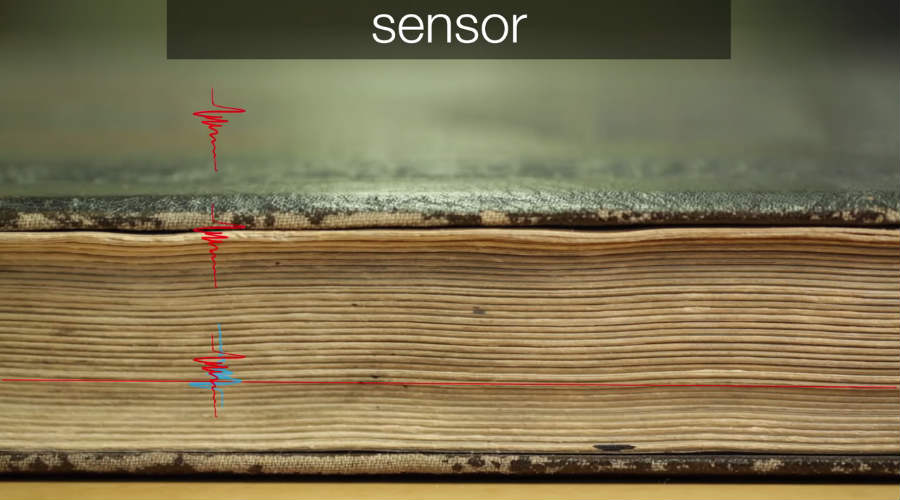One of the favorite hobbies in the earlier times was reading books. People indulged themselves in the world of fiction novels and other literature. That’s why the term bookworm became famous.
The reason why I’m telling you all this is the latest invention by MIT which is a serious bookworm. It’s a new camera that can read the text written on a page without actually seeing the page. The camera, when hung above a closed book can read all the pages.
The research was in progress at the Department of Media and Science of MIT Media Lab. Published in Nature Communications, the research aims the creation of a new imaging system that can detect text written inside a closed book. For now, the camera can only read the text till the first 9 pages. The researchers tested for a pile of papers having a single letter written on each page and the camera was able to identify the letters on the first nine pages.
The imaging system uses the high-frequency terahertz radiation to penetrate the pile of pages. We are familiar with how X-rays can penetrate through objects, a widely used application of medical science. Terahertz radiation–falls between microwaves and infrared on the electromagnetic spectrum–has some added advantages. It can be used to create frequency signatures of various chemicals because the absorption of different terahertz frequencies occurs at different degrees in the case of different chemicals. This helps the camera different between the paper and the written text (ink).

Image: MIT Media Lab
To sense the depth, the terahertz radiation proves to be more effective than the ultrasound waves normally used. Short bursts of terahertz radiation transmitted by the camera are captured by a receiver after reflection. The system also takes advantage of the concept of time resolution to identify individual pages of the book and measure distance between them.
A major problem in front of the researchers is to tackle the signal noise formed due to the terahertz radiation bouncing in other directions due to the imperfections of page surface. That’s the reason the terahertz imaging system is currently confined to detecting nine pages.
The terahertz imaging technology is a new entrant and a lot of work is due in this field. But it does present itself as a great choice for large digitization projects conducted by libraries across the world. They won’t have to turn every page of the touch-me-not bygone literature and take a snapshot. “The Metropolitan Museum in New York showed a lot of interest in this, because they want to, for example, look into some antique books that they don’t even want to touch,” says Barmak Heshmat, the co-author of the research paper.
Watch the terahertz radiation camera in the MIT Media Lab’s video:
— via MIT News
If you have something to add, tell us in the comments below.

0 comments:
Post a Comment